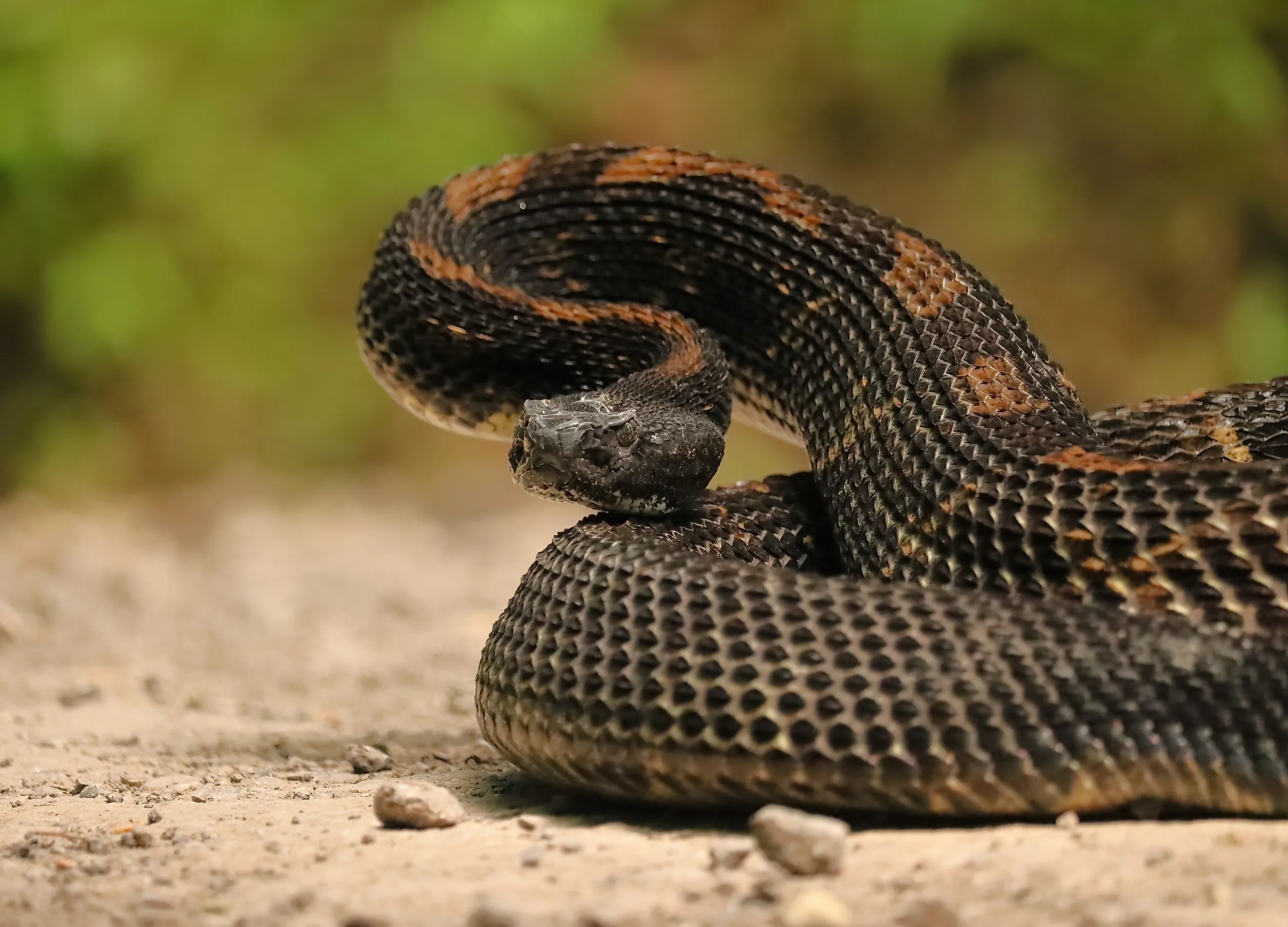
The Most Snake Infested Lakes in Wisconsin
Wisconsin, nestled in America’s Great Lakes region, is a wonderful state with plenty of outdoor spaces. With lakes, forests, parks, and more, people from all over flock to Wisconsin for its wilderness and wildlife, with plenty of recreational opportunities. While these areas, especially the state’s lakes, are excellent for outdoor lovers, they are also home to many animals. Among the many, snakes stand out, as Wisconsin is home to more than 20 snake species, out of which the timber rattlesnake and eastern massasauga are venomous. Thus, it is essential for visitors to know what snakes live in these lakes before they head out for a swim, ride out on a boat, or even cast a line to fish. To make sure you stay safe when exploring Wisconsin’s scenic lakes, here are the most snake-infested lakes in the state.
Devil’s Lake
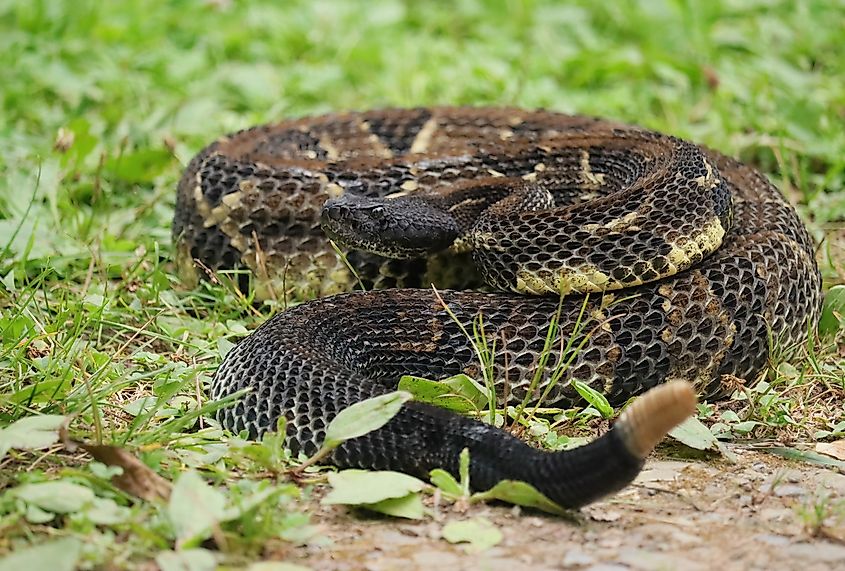
Often considered one of the most snake-infested areas in the state, Devil’s Lake is a famous 374-acre lake in the Baraboo Range. This lake is a prime attraction in its namesake, the Devil’s Lake State Park, making it a popular spot for outdoor recreation. Visitors to the 9,217-acres state park can often be seen hiking, biking, boating, fishing, and swimming in and around the river. The surrounding area is also home to plenty of tall cliffs and bluffs, offering many amazing viewpoints of the lake and its forested coast.
Due to the lush flora and fauna in the region, snakes are also not far behind when it comes to Devil’s Lake. To this end, the lake is a known habitat for multiple species, including the northern watersnake, timber rattlesnake, small red-bellied snake, and the black rat snake. Among these, only the timber rattlesnake is venomous, and it is one to watch out for. This slithering viper can reach a total length of up to 60 inches (152 cm) and has a prominent dark crossband coloration on a light brown background. While this species tends to be quite timid, they are good swimmers and have a high venom yield that can cause pain, spasms, and bleeding. Thankfully, timber rattlesnakes give off a loud rattling sound from their tail, so you’ll know when to get away from one.
Lake Pepin
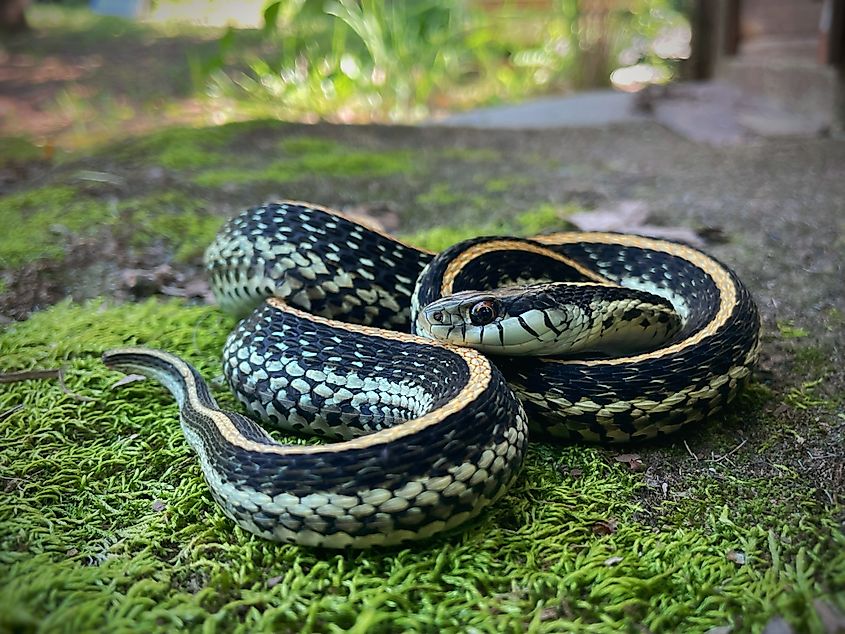
Lake Pepin is a natural lake that lies along the Mississippi River on the border between Wisconsin and Minnesota. It is a naturally occurring lake on the Mississippi River and is now a lovely tourist destination. The lake is one of Wisconsin's larger bodies of water, boasting a surface area of over 25,000 acres and a length of more than 22 miles (35 km). As for recreation, Lake Pepin is a top spot for fishing, kayaking, and waterside camping. Moreover, the lake hosts plenty of events, such as the Tour de Pepin in June, a supported cycling ride around the coast with live music, food trucks, and more.
Amidst its popular activities, Lake Pepin is renowned for the legend of 'Pepie,' a mythical serpent-like creature believed to inhabit its depths. Although 'Pepie' remains a part of local folklore, the lake does host many smaller, real serpent-like creatures. Specifically, it is home to various aquatic snakes such as the common garter snake and watersnake. The garter snake is one of the most widespread in the area, recognizable by its yellow stripes and black markings. Fortunately, both species are non-venomous, allowing visitors to enjoy the lake without concerns about venomous bites.
Lake Michigan
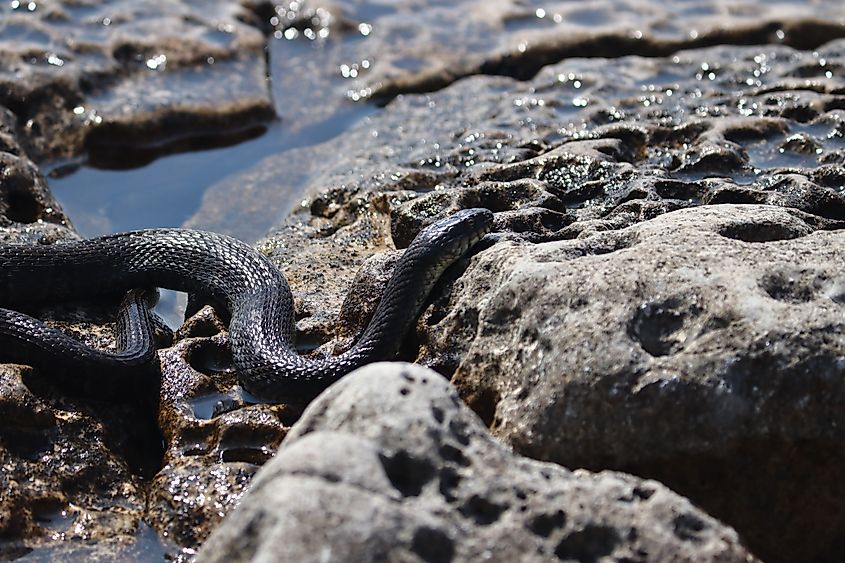
While Lake Pepin may be large, it pales in comparison to Lake Michigan, one of the Great Lakes of North America. This massive body of water spans over 22,404 sq miles (58,030 sq km), making it the third largest of the Great Lakes. Wisconsin boasts a 407-mile (655 km) shoreline with the lake, filled with plenty of natural areas, recreational opportunities, and wildlife. Among the most famous are the Rock Island State Park, the Eichelman Park, and the Harrington Beach State Park, each showcasing unique coastal sights and activities.
Lake Michigan's rich coastal forests, islands, and deep waters support a variety of water snakes. In Wisconsin alone, several species such as the northern watersnake and the common garter snake inhabit the area. Among these, the northern watersnake is renowned for its swimming prowess, often found in and around large aquatic environments. It can reach lengths of up to 4 ft 5 in (135 cm), with yellow-to-black bands and dark markings. Despite their intimidating look, northern watersnakes are generally shy and pose no threat to humans—their bite is harmless. However, vigilance near wetlands is advised, as the extremely rare eastern massasauga may occasionally occur in certain wetland areas close to Lake Michigan.
Lake Winnebago
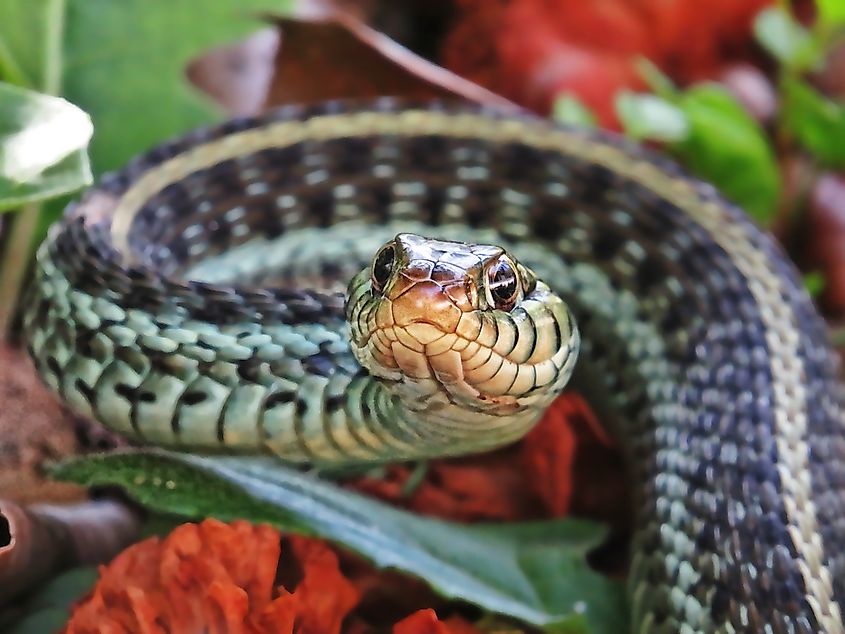
Close-up of the head of an Eastern Garter Snake.
Lake Winnebago is a shallow freshwater lake in the east-central part of Wisconsin. Spanning nearly 140,000 acres, it is the largest lake entirely within Wisconsin and has the scenery to back it up. The lake's expansive shoreline features plenty of popular parks, such as High Cliff State Park, a lovely destination for camping and hiking. The park also boasts a marina and beach, where people can be seen setting out on boats, fishing, and swimming in the lake’s tranquil water.
Many animals, including snakes, favor Lake Winnebago’s tranquil waters alongside people. The common garter snake is common in most lakes, but this lake also hosts the eastern garter snake. Indigenous to North America, this snake can reach up to 26 inches (66 cm) in length, making it one of the smaller snakes in the state. Although non-venomous, garter snakes possess a Duvernoy’s gland that can cause mild non-allergic reactions in humans.
Snake Safety in Wisconsin's Lakes
Wisconsin's lakes are undeniably stunning and inviting, providing numerous opportunities for outdoor activities. Beneath their peaceful surfaces, a vibrant ecosystem hosts various snake species, from Devil’s Lake’s timber rattlesnakes to Lake Michigan’s northern watersnakes. These reptiles are a vital part of the state's natural environment. Most are harmless, but understanding what to look for helps ensure a safe and enjoyable visit. When planning your trip to Wisconsin's lakes, stay informed and prepared to fully enjoy the beauty and marvels of these extraordinary settings.











